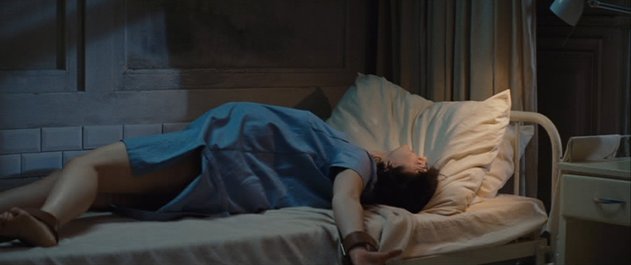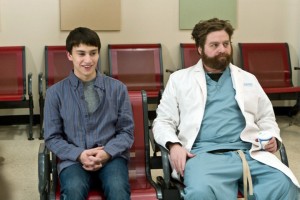 My Own Love Song is a story about life after a car accident for a women who survived paraplegia and a stay in the psych ward. The movie opens with Jane Wyatt, a former singer, being chatted up by a man in a bar who seems to be into her, but realizes that he “has to go somewhere” after he spots her wheelchair.
My Own Love Song is a story about life after a car accident for a women who survived paraplegia and a stay in the psych ward. The movie opens with Jane Wyatt, a former singer, being chatted up by a man in a bar who seems to be into her, but realizes that he “has to go somewhere” after he spots her wheelchair.
Jane Wyatt has a son, but her child had been taken away to foster care by the State after the accident. While disability, sudden or not, should not mean that your children are taken away, it may be that the jurisdiction where the story is set has a law similar to the one in NY that states that when parents get a diagnosis of mental illness and/or become inpatients in a psychiatric hospital, their children must be removed from parental custody. There is lobbying in NY to get this law changed, though there are some merits to this approach.
It is because Jane feels that her house, her finances, and her capacity to act as an effective, loving parent after having been absent from her son’s life for so long are inadequate, that she hides a letter from her son, inviting her to his Communion party. The concealed letter is found after some snooping around the house on the part of Joey, her “buddy”, a black man with a stammer and a seeming anxiety problem who serves as her informal personal care attendant and “shadow”, and describes himself during the course of the picture as “an ex-fireman” and “her bodyguard”.
The problem is that he is also a “specialist who can talk to ghosts”, sees angels in the sky, and gets into physical confrontations with people who mock this belief in the supernatural. It is implied that Joey is a schizophrenic. There are a couple of well-designed scenes which depict his perception and the angels he presumably sees in a subtle fashion. (Just as magically and mystically, the parking lot of the motel where they sit and look at the moon has a petite wooden wheelchair ramp leading from the curb to the blacktop.)
While it is clear that Jane, who met Joey in the psych ward, does not share his beliefs about the supernatural, and is put in untoward situations with the neighbors and the authorities when he decompensates or escapes from the psychiatric hospital, she nevertheless considers that The System gave him a raw deal, lying to cover for him when the police and mental health authorities come to her door, looking for him and reminding her of the penalty for harboring a fugitive. (Situations like these are enough to make a schizophrenic paranoid.)
The two decide to leave town until the situation cools off, and set off in a car that, soon after, catches fire. Any self-respecting paraplegic would have thrown themselves out of the smoking car, but Jane waits for Joey to retrieve her and her wheelchair. Indeed, Jane often is shown with someone pushing her (which actually annoys many genuine paraplegics to the point that they remove the push handles from their wheelchairs). She largely depends on Joey day-to-day, even though there are times when he has the potential to be a danger to himself and others. She has a manual chair, a regular car without hand controls which someone else (usually Joey) drives.
Life has some unusual hazards for female paraplegics. While Jane seems to have the ability to go some places without Joey–she attends physical therapy sessions outside the home, how she gets there is not shown–she is on several occasions confronted with situations that range from vaguely creepy to genuinely dangerous, like the man she meets on her journey who offers to give her a shower, or a bubble bath, and asks if she can “feel anything”. He explains by saying “for a long time, I couldn’t feel anything in here (indicating his heart). I can walk, but I think I’m crippled, too”. He proves it when he takes off in her new (to her) car after nothing happens between them.
Jane, Joey, and Billie (a non-disabled woman they pick up who becomes something of a love interest for Joey despite her erstwhile married status) must continue their journey on inaccessible buses and trains. On one train platform, Billie decides to return to her plain life, without the nuts.
The movie comes to a presumably happy ending after Jane resumes her singing career (she somehow gets on stage at a honky-tonk in spite of there being no wheelchair ramp to the platform being in evidence), reconnects with her son and performs with Joey on guitar at the Communion party, and embarks on a relationship with Joey; schizophrenia, angel sightings, and all.
Warning: deaf and hard-of-hearing folks should not rent this movie from Netflix or buy it. Legende Films deliberately removed the captions from the rental DVDs in order to force people who need them to buy the DVD, and Netflix did not see fit to declare such disks defective. For this reason, My Own Love Song goes in the Disability Movie Hall of Shame.






